The question is about sorting pictures(camera) vs. other types of images. In another question, I tried to leverage a scripted solution using ImageMagick which was provided. I'm now exploring another answer to the same question, using OpenCV.
As described in the solution, the idea is to change color mode to HSV, smooth an image and compare its hue channel to the original; then make an average of the difference as supposedly comic-like images differ from real life images in that respect(in that they react differently to the operation). So I tried:
#include "imgproc/imgproc.hpp"
#include "highgui/highgui.hpp"
#include "cv.h"
#include <iostream>
#include <stdio.h>
using namespace std;
using namespace cv;
int main(int argc, char *argv[]) {
//takes filename as argument i.e. ./smooth one.jpg
cv::Mat input, output, hsv;
input = imread(argv[1],1);
//Resize to 300
Size size(300,300);
resize(input,input,size);
//Change original image color mode to HSV
cvtColor(input,hsv,CV_RGB2HSV);
//Separate channels; keep hue on h_image
std::vector<cv::Mat> hsv_channels, hsv_channelsOUT;
cv::split(hsv, hsv_channels);
cv::Mat h_image = hsv_channels[0];
//Apply smoothing/blur on h_image, to output
bilateralFilter(h_image,output,60,120,30);
//Split output(already just H) to extract H array for mean later
cv::split(output, hsv_channelsOUT);
cv::Mat O_imageH = hsv_channelsOUT[0];
//Average all differences between H values pre/post blur
//Compare h_image with h_image+bilinearF visually to see
Scalar h = mean(hsv_channels[0]-hsv_channelsOUT[0]);
//Print that to console
printf("H: %f\n", h[0]);
//Showcase all the steps; comment to use to binary in scripts
//All windows piled up on top of another one at runtime; move to see
cv::imshow("input",input);
cv::imshow("hsv",hsv);
cv::imshow("h_image",h_image);
cv::imshow("output",output);
cv::imshow("h_image+bilinerarF",O_imageH);
//exit on keypress on image displayed
waitKey();
return 0;
}
Which yields something like this on this image and this portrait (two "real" images, chosen to see if there is similarity in the values i.e. that they're of the same type):

We are comparing the 3rd and 4th image in the sequence, which is one channel against the same one channel image smoothed. Results for the average of the difference between elements in the H channel(0):
JFK H: 7.313056
Landscape: H: 8.265544
I don't really know how to set the bilateralFilter as I don't know what sigma space is etc. I had initially set it to maximum values generated in the OpenCV documentation example(see intro). I doubled the values as this widens the difference in H values between some types of images(somewhat isolating their range, I would think). All black line art on white will yield 0 for their H value - just is a side effect of what's done, their hue channel is black either way. So those could easily be categorized as such. I do not have a sufficient set of images to make predictions and adjust the bilateralFilter accordingly. I seem to have camera images at H: 4-5; 7-9; and the smallest value I get(0.08) is from a blue to green pattern of identical non opaque triangles(a graphic); all these, are observations on too small a sample to infer anything meaningful.
Q. So I would like to know if I imlemented the idea properly(according to the solution I based this on)? Should I come to the conclusion that it's going to take a much more resilient program(using many features) to do what I want to do? Should I set the bilateralFilter differently?
